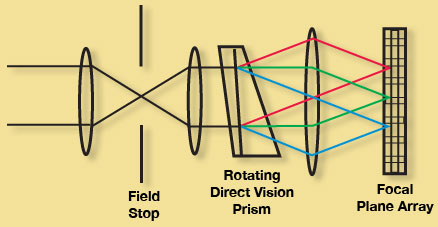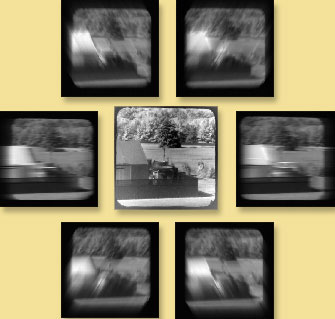|
|
 |
| |
The Chromotomographic Hyperspectral Imaging Spectrometer (CTHIS) is a high throughput imaging sensor, capable of determining the spectral components of scenes or objects over wide dynamic range. The sensor also resolves the time evolution of source spectra for sub-pixel events such as flames, plumes, or flashes. The sensor features a field stop aperture for near 100% optical efficiency, a rotating direct view prism for color separation, and a variable frame rate camera. The use of a field stop increases sensing efficiency relative to slit based systems; while prism rotation homogenizes pattern noise related to detector response variation. Both features support measurements over wide dynamic range. |
|
|
| |
 |
|
| |
The CTHIS records images of the scene viewed through the continuously rotating prism and synchronized to the imager's top-of-frame. These images are then processed using algorithms similiar to those used in medical Computed Tomography (CT) scanners. |
|
|
|
 |
| |
Current CTHIS systems operate in the VIS/NIR, MWIR, and LWIR bands.
The technique is applicable to other bands if suitable optical materials
exist and imaging cameras are available. |
|
|
|







